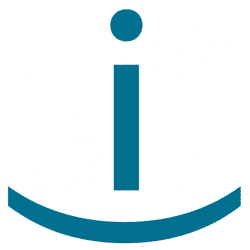Project VRM (Vendor Relationship Management)
Project VRM Identity Commons Charter
The Identity Commons Steward is Iain Henderson and the alternate is Dean Landsman
This group grew out of Doc Searls original ‘rental car use case’ put forward at Digital Identity World 2004. VRM, or Vendor Relationship Management, is the reciprocal of CRM or Customer Relationship Management. It provides customers with tools for engaging with vendors in ways that work for both parties. Project VRM is currently under Berkman Center for Internet and Society at Harvard Law. Participants are working to create the ecosystem of tools, protocols, and services that help users manage vendor relationships. It has five committees, ,Vision, Standards, Organization, Usage and Compliance. There are several active mailing lists, a blog, a wiki and regular conference calls and an community of software vendors working on building standards based tools to make it real.
Purpose: Create an ecosystem of tools, protocols, and services that help users manage vendor relationships.
Principles:
User-centricity. Work from the perspective of the end-user. Users should control who, how, and what happens throughout the entire process. The process should create value for the user first, vendors and others second. Note that by creating value for users,
You can’t locate any information concerning the background of the writers or any samples available it is possible to test. As an example, you might require a bibliography to be contained in some research or the newspaper that you’ve already done essay writers. We are going to be able to help you, if you’ve got an essay that should be composed. English, business, management regardless of what area of study you’re in, you’re very likely to get to write some documents. Thus, you can get the ideal custom essays . What is more, our writers are trained to create papers together with expectations and the requirements of the customer in mind. The authors will take into account to begin with. There’s a whole lot of writers with Masters degrees and even PhDs too.
there should be plenty to go around. See Reciprocity.
Reduce, Reuse, Recycle. Don’t Reinvent the Wheel. A lot of technology and solutions have already been developed to address various pieces of our online world. When possible, reuse existing tech and learn from prior experiences. That means researching what has already been done and integrating the past whenever possible.
Reciprocity & Everybody Wins. VRM should create value for everyone in the value chain. Although the focus is on the user (see User-centricity), each link in the relationship should come out better after implementing a VRM Protocol. When everbody wins, it will be much easier to convince everyone to participate.
Leverage network effects. Network effects scale as more people participate. Whenever possible, build systems with this characteristic. In particular, reducing transaction costs across many different transactions can dramatically change a market, even when those costs are relatively small part of each transaction. So, use network effects to leverage the value of our efforts as far and wide as possible.
Relationships are more than transactions. Although vendor relationships are ultimately bounded by transactions, they begin well before and continue well after. Build systems that enable rich, long-lived relationships in ways that create real value.
Solve real-world problems. People have lots of challenges and frustrations with existing sales, shopping, and support systems. Pick one and re-invent it from a user perspective. If putting the user in control creates real value with minimal investment by the vendor, we have a good chance of getting traction with both users and vendors.

